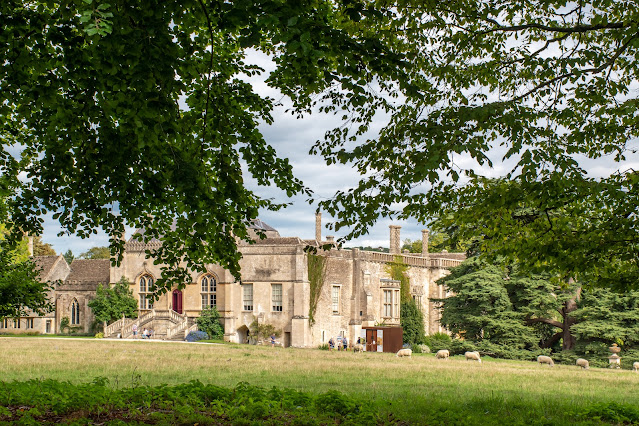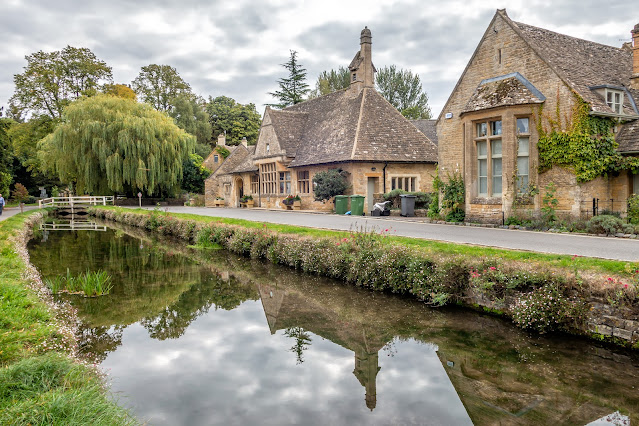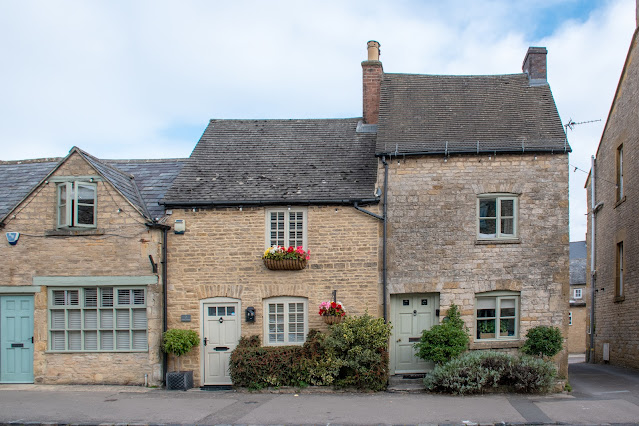When we put Lacock Abbey on our list of places to visit, it was not apparent (I didn't read it all!) that this was hardly a ruin, but a massive house with a spectacular history.
It started, in the 12th Century, with Ela, 3rd Countess of Salisbury. She was born into a very privileged family and when her father, William FitzPatrick (2nd Earl of Salisbury) died, Ela, who was just nine years old, inherited her father’s title, fortune, and lands.
As an heiress, Ela came under the protection of the King. He arranged a marriage for his young ward to his half-brother, William Longespée. Living at what we now know as Old Sarum, William and Ela had eight children, one of whom, Nicholas Longespée, became Bishop of Salisbury.
William died in 1226 while Ela was still only 39 years old. She took over his role of Sheriff of Wiltshire on a temporary basis and was later appointed as Sheriff in her own right. All the couple’s wealth, land and title reverted to her. From this time, she started planning the founding of what was to become Lacock Abbey; by 1229 she had taken the first step of giving land at Lacock to the church.
The founding of the abbey dedicated 'to God and the Blessed Mary and Saint Bernard' was partly as a tribute to her husband, and partly as a sanctuary where she would later retire as a nun.
On 16 April 1232, Ela laid the foundation stone of Lacock Abbey and building work began. Ela joined Lacock Abbey as a nun in 1238. Three hundred years later, the convent closed. In 1539 to be precise, as part of the Dissolution of the Monasteries.

Our first glimpse of the Abbey through the trees.

Following the Dissolution of the Monasteries in the mid-16th century, the Abbey was purchased by Tudor courtier Sir William Sharington, who converted the building into a family home. The church was knocked down and the stone was used to extend the building to form the house it later became.
The house later passed into the hands of the Talbot family through marriage, and during the 19th century became the residence of William Henry Fox Talbot, who made history by capturing the world’s first photographic negative in the building’s South Gallery, lending the Abbey its name as the birthplace of modern photography.
William Henry Fox Talbot inherited Lacock from his father in 1800 when he was just five months old. The estate was in debt and was let out until Fox Talbot moved in with his mother and stepmother in 1827. A pioneering scientist and keen mathematician, Fox Talbot is one of Lacock's most famous residents. He lived in the abbey until his death in 1877 and is buried in the village churchyard.
For us today it seems normal to take photos of the world around us. We use a camera or phone daily, snapping pictures of friends and family, beautiful landscapes, even the food we eat. Who would guess that all this started here at Lacock Abbey in 1835!
Frustrated by his inability to paint and draw, he wanted to find a way to 'fix images'.
After some experiments Talbot took an image of a window at his home Lacock Abbey in Wiltshire in 1835. This image, not much bigger than a stamp, is now celebrated as the world’s earliest surviving photographic negative.
As a result of its past incarnations as a nunnery and private home, Lacock Abbey is a fascinating mishmash of architectural styles.
Today it is a Grade I-listed building and belongs to the National Trust, after being gifted to the charity by the Talbot family in 1944. It's well worth a visit, as is the village, which is also mainly National Trust.


The cauldron in the Warming Room. One of the many rooms in the old abbey part to be used in Harry Potter films.
The calefactory (also warming house) was an important room or building in a medieval monastery in Western Europe. It was here that a communal fire was kept so that the monks could warm themselves after long hours of study in the (unheated) cloister or other work.
Books were very precious, and people of religious orders were virtually the only people who could read and write, so keeping books safe in a locked place made sense.
Two of the many old doors you can find around Lacock Abbey.
You can see by this image how the house it was to become was built over the existing cloisters.
Having left the Abbey, we made our way to the village itself where you are greeted by a typical Cotswold village, with houses such as below.
Some of the beautiful old houses include the stall outside this house with its honesty box selling `Harry Potter Wands` I didn't buy one!
From the architecture it is thought that the Angel Inn was built in the late 15th century, as an inn. This was a time when the wool trade was flourishing, and the property is believed to have been converted into a wool merchant's house in the 16th and 17th centuries

Prior to the advent of mechanized spits, the process of roasting meat was a laborious process. To be evenly cooked, meat had to be regularly rotated on a metal spit, a process which required hours of constant attention. Originally, low-ranking kitchen servants manually turned such spits. Eventually, however, they were powered by a breed of short-legged dogs known as turnspits. The turnspit was bred specifically to run inside wheels which were mounted on a wall near an open range, like the example at the George Inn in Lacock, which I believe is the only example in the country to still be in place, although there are some in museums. We had lunch at the George Inn, so we had a good look at it, but my photo was rubbish!
Note: These two images above are not mine
The wheel was attached to a chain, which ran down to the spit. As the dog ran, the spit turned, cooking the meat evenly. Wheels like this became indispensable items of kitchen machinery, not only in household's wealthy enough to have the means to roast a large joint of meat on a regular basis, but also in inns and taverns. But by the middle of the 19th century, with the introduction of inexpensive spit-turning machines called clock jacks, these wheels became redundant. So too did the turnspit dog; the breed is now extinct.
At the eastern end of this Lacock street, stands the medieval parish church of Lacock, dedicated to St Cyriac. It is possible that a late Saxon church stood on this spot, but the present building is largely a product of the 15th century, with some earlier stonework.
The dedication of Lacock's church is unusual in England. Cyriac was supposedly a three-year-old child executed by the Roman Governor of Cilicia in 313 AD for refusing to recant his Christian beliefs.
Churches dedicated to Cyriac are common in Normandy, emphasizing Lacock's strong links to the region in the aftermath of the Norman invasion.
The sheep gate at the church so that the sheep cannot get into the churchyard, but people can.

















































12.JPG)
13.JPG)


06.JPG)

04.JPG)
03.JPG)
02.JPG)



